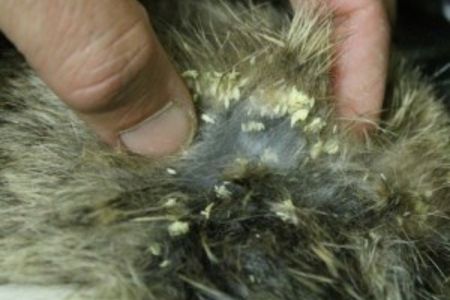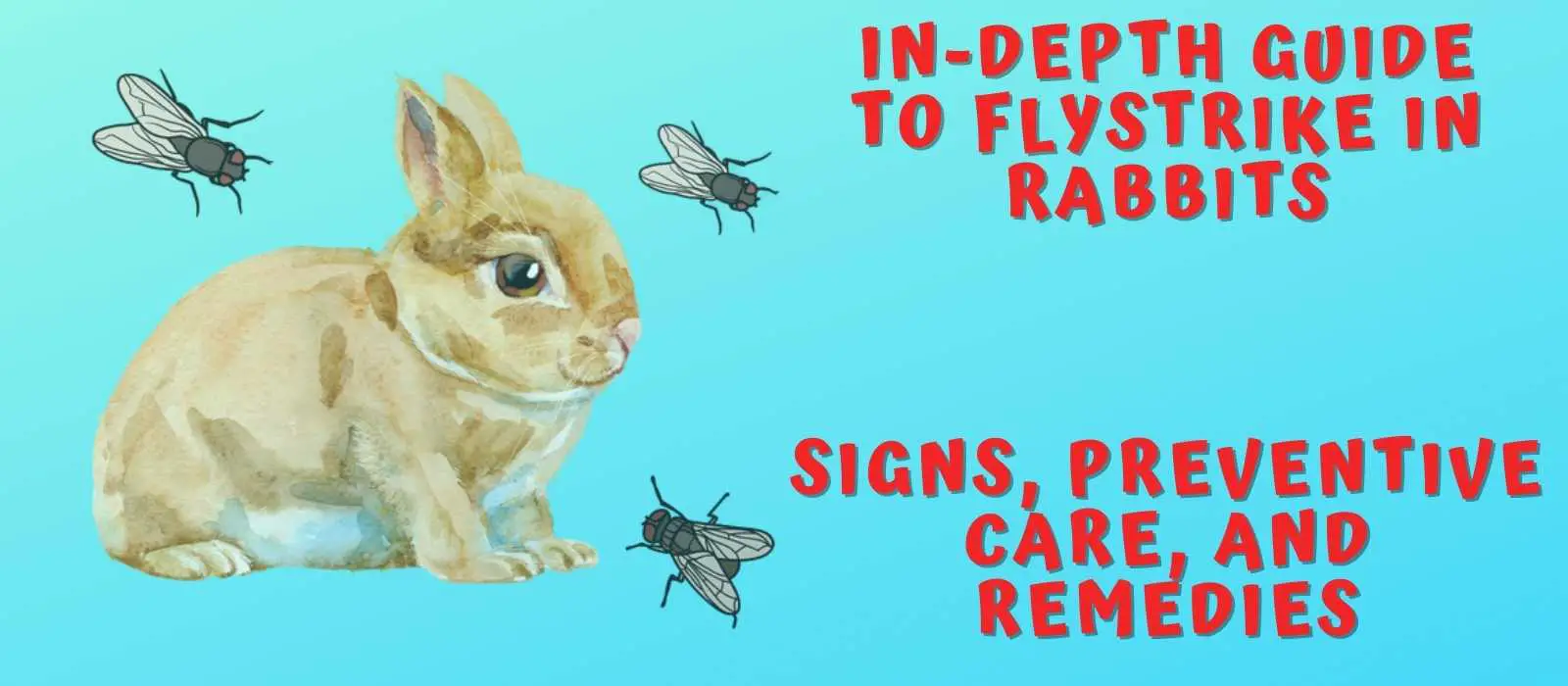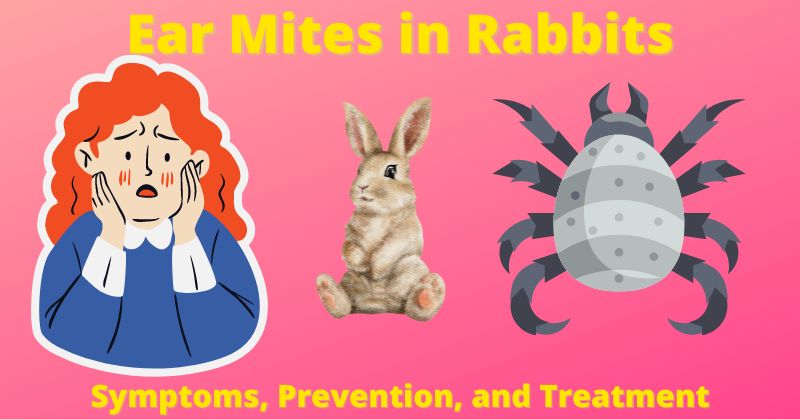Introduction: Flystrike in Rabbits
Warm weather comes with several health risks for rabbits. Flystrike (also known as myiasis) is one of the worst concerns for your bunny.
Yes, pet rabbits are as susceptible to flystrike as their cousins in the wild. But nothing to worry about. There are effective ways to keep your bun safe from maggots.
This post gives you all the information to identify the signs of flystrike in house rabbits, the best ways to prevent flystrike, and effective treatment/care for infected bunnies.
What Is Flystrike in Rabbits? Is It Harmful?

Flies prefer laying their eggs on warm-blooded animals such as bunnies. The eggs remain on the animal’s coat (near the bottom, belly, back, and tail) and survive till hatching.
After hatching, the maggots from the eggs continue to live on the rabbit’s body. They feed on the bun’s flesh rapidly.
Some species, including greenbottles and bluebottles, are the most hazardous laying up to 200 eggs at a time.
The eggs hatch in about 24 hours and the maggots start eating the flesh from the host’s body. The maggots are dangerous enough to eat up the rabbit’s flesh in less than a day, causing the sudden death of the small animal.
This means you have little time to save an infected bun.
Causes of Flystrike in Rabbits
Even a clean and healthy rabbit can get flystrike. But some specific factors offer favorable conditions to attract flies in the bunny enclosure.
Hot Climate
Flystrike can happen to any rabbit species at any time of the year. However, the population of flies increases in manifolds in summer. Warm and humid weather provides the best environment for flies to lay their eggs.
Soft Loose Stools
Feeding foods low in fiber is not healthy for rabbits. Malnutrition is one of the causes of why some bunnies consume their soft fecal pellets (also known as caecotrophy).
Excreting soft wet poop makes their bottoms dirty. These substances are hard to clean from the fur around the anus.
Flies can sense the odor of urine and feces from a long distance. Traces of poop at the bottom and pee around the stomach are the choicest places for the flies to lay eggs.
Sick and Old Rabbits
Bunnies with painful health conditions such as arthritis, overgrown teeth, or injuries cannot groom themselves, especially the regions at the rear end, belly, etc. Grooming is also a problem with species (Angoras) having a thick coats.
Bleeding Wounds
The smell of the blood oozing out from open cuts draws flies quickly to the rabbit habitat.
Dirty and Unhygienic Enclosure/Playpen
A damp and soiled rabbit enclosure emits a foul smell. This is strong enough to bring flies from your backyard to your bun’s living area.
Species with Extra Skin Folds
Some females have extra skin folds and dewlaps. Bunnies find it hard to groom these areas properly. Sweat and urine near the belly region provide a suitable place for flystrike.
How to Detect Flystrike in Rabbits? Flystrike Symptoms
Early detection is the best way to save your bunny from painful flystrike incidents. Monitor your bun regularly to find traces of eggs and maggots.
However, you can easily understand the problem from a change in the rabbit’s behavior. The small creature will show discomfort through several actions- scratching the body, tossing its head, etc.
Some signs of flystrike include:
Lethargy
Reluctance to move
Refusing food and water
Digging
Strong odor in the habitat
Treatment for Rabbits with Flystrike Infection
Time is the most crucial factor to relieve your bun from a flystrike attack. If you see maggots on the skin or fur, seek veterinarian help at a clinic immediately. Most vets will arrange emergency medical treatment to help the small pet as quickly as possible.
Never use water, soap, or harsh cleaning agents if your rabbit has flystrike. Your bun is already in severe pain. Such home remedies can worsen the condition.
The vet will give an anesthetic to reduce the pain at the earliest. This is followed by medication, including antibiotics, anti-inflammatory medicines, etc.
Medical treatment can help a rabbit achieve 100% recovery from flystrike infections.
How to Prevent Flystrike on Rabbits
Prevention is the best measure to keep your rabbit safe from painful and life-threatening flystrike.
#1. Monitor Your Rabbit Regularly
You can see the eggs and maggots by checking around the bottom area of your bunny. Check your bunny twice a day during summer.
#2. Clean Your Bunny of Poop and Pee Traces
Keep your rabbit as clean as possible. You should not give a water bath as this can be stressful and unhealthy for bunnies. A professional vet can guide you through the process to keep your bun clean at home.
#3. Treat the Wounds and Cuts
If your bunny has cuts or wounds, keep it clean and dry. Apply prescribed medication for faster healing.
#4. Grooming and Brushing
Elderly and arthritic bunnies need grooming support. Brushing the coat daily is an essential care regimen for buns with severe skin folds or long hairs.
Trim the fur of long-haired bunnies in summer. This prevents wetness from urine and sweat.
#5. Nutritious Diet
Feeding a proper diet every day ensures your bun is not excreting loose stools. It reduces caecotrophy and prevents poop from sticking to the bottom, tail, and nearby areas.
Serve hay diet (mostly timothy hay- 80%) every day without fail. Buns can eat a small portion of vegetables once or twice a day (up to 15% of the entire diet per day). The rest of the diet may include healthy hay-based pellets (up to 5%).
#6. Keep the Rabbit Enclosure Clean and Dry
This is an essential step to keep your rabbit safe from flystrike infections. Clean the hutch and playpen area every day. Remove the wastes from the litter pan and put fresh litter material regularly. Change the bedding with a new spread once a day.
A thorough cleaning regimen is necessary every 15 days. This includes changing the edible rabbit toys, removing the traces of hay, etc. Empty the enclosure and spray disinfectant to kill all types of pathogens.
Wrapping Up,
Flystrike can happen to a bunny at any time of the year. However, summers are even crucial when rabbits need extra care and monitoring. Keeping your bun clean, serving a healthy diet, and regularly monitoring can do wonders to keep flies away.
But, if your bunny has maggots or eggs on the body, emergency treatment at a clinic is recommended. Home remedies are not sufficient to remove maggots from a rabbit’s body.





